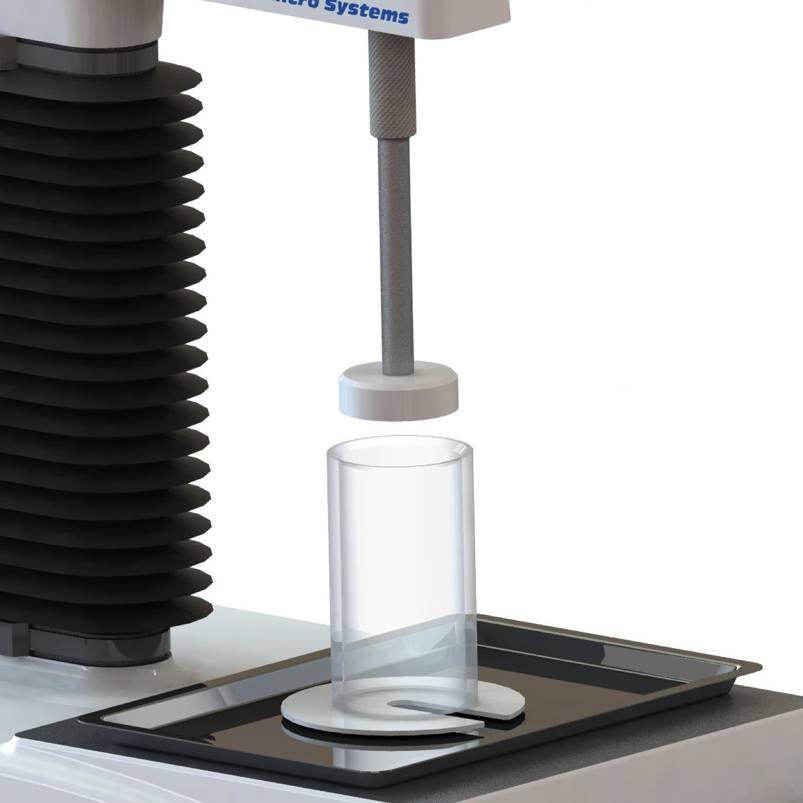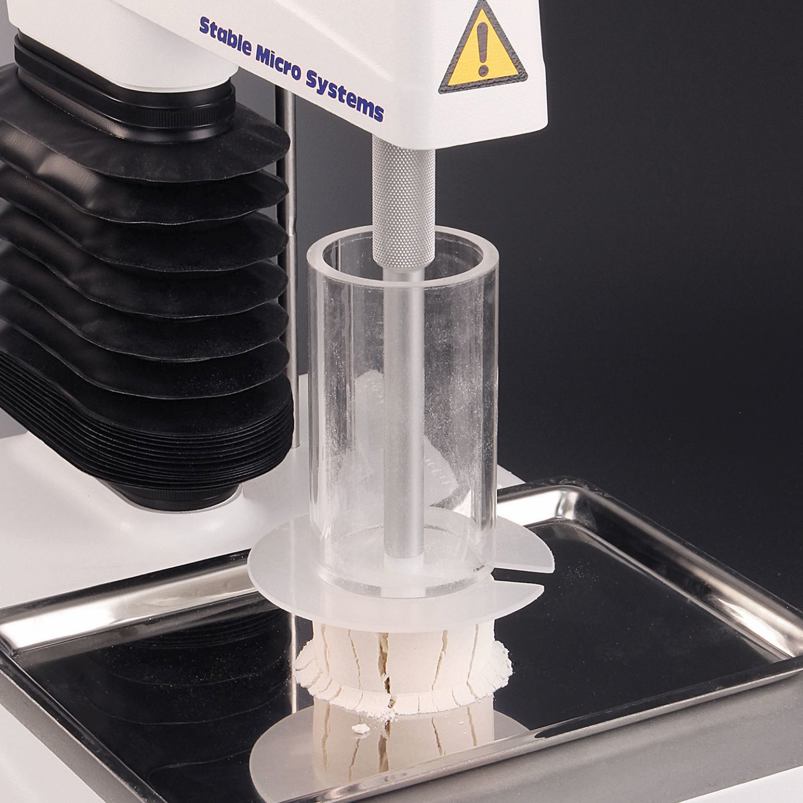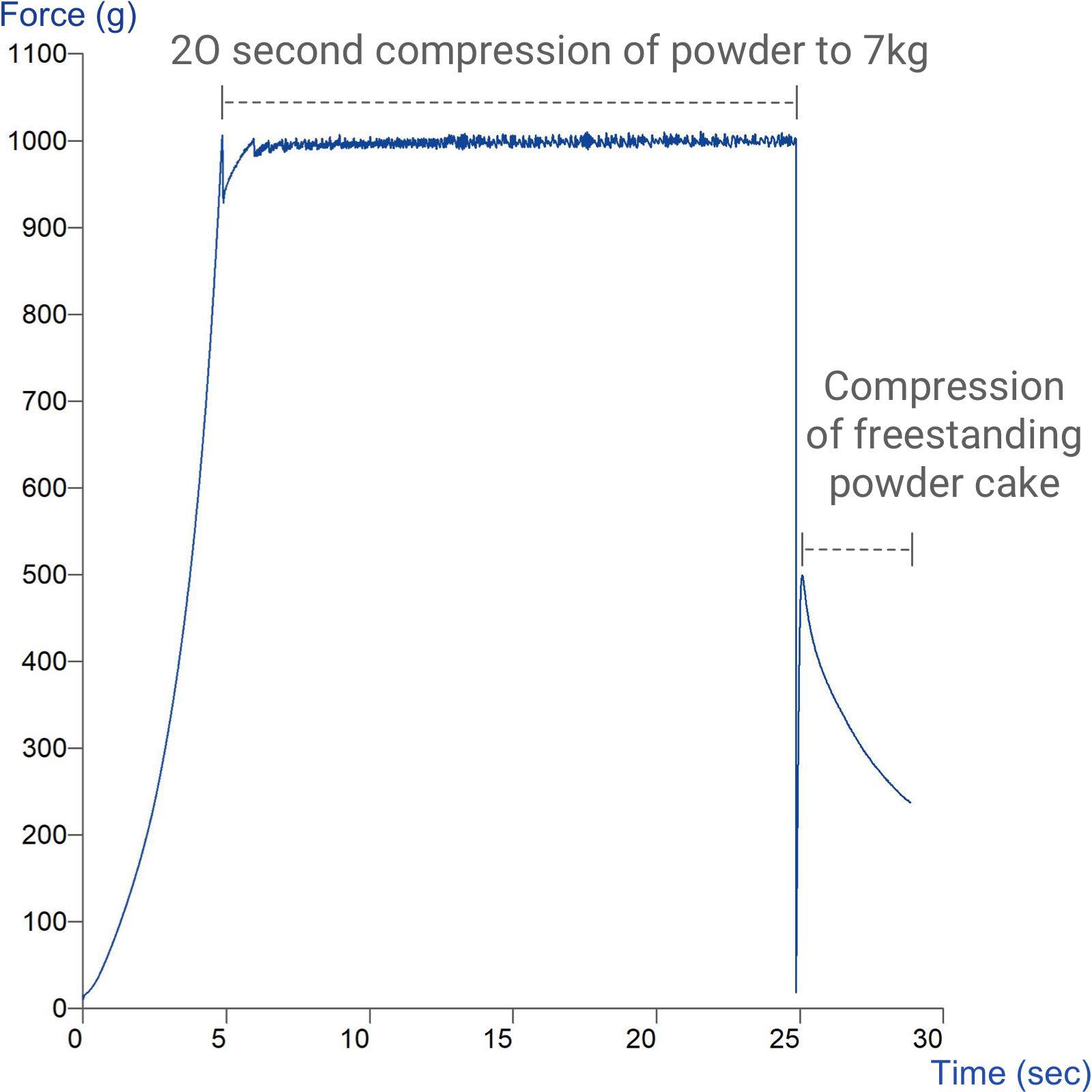Product overview
In industries that handle powders on a regular basis it is very important to understand how a powder or granular material responds to pressure. In storage, the weight of powder in a container exerts pressure on the particles at the bottom. If the powder has good flow behaviour it will not consolidate and will flow out of the silo or hopper without sticking – this is very desirable. The longer a powder is stored for, the more likely it is to form a cake in its hopper and refuse to flow without further assistance.
A good measure of a powder's flowability is the force required to cause it to flow. This can be calculated using the measurement of unconfined yield stress. Unconfined yield stress is a simple technique that can be used to analyse the flow behaviour of many different types of powders and the change in this behaviour with different consolidation stresses and times.
The Unconfined Yield Stress Rig is a textbook application for the simple measurement of powder flowability. The measurement is made by filling a chosen weight of powder sample into a tube and a compression piston then applies a chosen consolidation force for a specified time. After consolidation, the tube is slid upwards above the consolidation probe and held up via a support disc before the probe moves back down to compress the freestanding column of powder which ‘yields’.
Formulae are built into Exponent Connect software which are able to collect the required parameters and calculate the unconfined yield stress. Unconfined yield stress has little meaning as a measurement in itself as it depends on the consolidation stress (a powder more heavily compressed is likely to flow less freely and have a higher yield stress). The “flow factor” is therefore plotted and used to compare between samples instead. The larger the flow factor the more easily the powder will flow after any given consolidation pressure.
This assessment of powder characteristics is yet another measurement that the Texture Analyser can perform on powdered materials alongside the functionality offered by the Powder Flow Analyser.
How does the Unconfined Yield Stress Rig work?
Ideal sample form
Powdered material.
Technical information
Installation
Full installation instructions are provided within the Education Zone of the latest Exponent/Connect software version and on the technical information sheet accompanying this product.
Chemical compatibility
Stable Micro Systems probes and attachments are commonly made from four materials: anodised aluminium (AA6082 T6), stainless steel (316 T), Delrin (acetyl copolymer) and Perspex (polycarbonate).
In general use, probes and attachments made from these materials will be suitable for testing food products and inert non-food materials.
The four materials listed above are not universally resistant to all types of chemicals and as such the compatibility of the probe/attachment material with the product (to be tested) must be established to prevent damage to the probes and attachments. If the compatibility of the product with the probe is unknown to the customer then the chemical information about the product (Material Safety Data Sheet or Product Data Sheet) should be submitted to Stable Micro Systems. Stable Micro Systems will then assess the suitability of the probe/attachment material for use with the product and advise accordingly. If this advice is not sought then Stable Micro Systems will not accept liability for probes/attachments damaged by chemical attack from the product being tested.
Cleaning and maintenance
All probes and attachments may be cleaned in warm (or hand hot) water using a mild detergent. A soft brush may be used but abrasive cleaning aids should be avoided. Stable Micro Systems products should not be microwaved or cleaned in a dishwasher.
Screw threads should be lightly lubricated after drying using a light lubricant, e.g. petroleum jelly, mineral oil. This will aid the fitting and unscrewing of the item. Each component of a probe or attachment should be wrapped separately when stored, to avoid scratching or chipping. This will safeguard against any unnecessary damage to the accessory.



